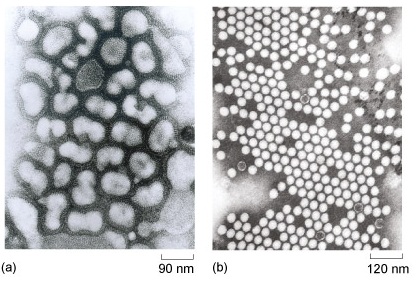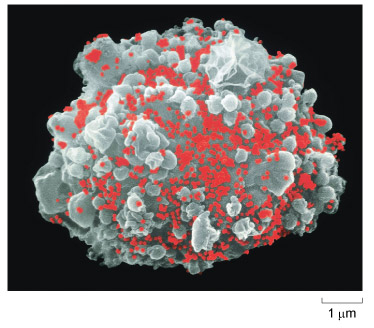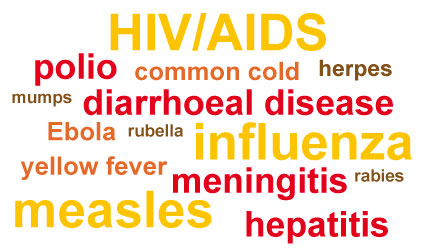3.9 Viral pathogens
Remember that viruses are not regarded as ‘living’ organisms because they don’t consist of cells. You could think of them as minute containers for one or more short strands of genetic material and a few other chemicals. Most viruses are about 10 times smaller than typical bacterial cells, and 100 times smaller than typical animal cells. They are so small that they can only be photographed with the huge magnification made possible by an electron microscope (Figure 16).

Viruses can only reproduce new virus particles or virions [vih-ree-onz] by invading a living cell. The genetic material of the virus redirects the genetic material of the host cell and causes it to assemble thousands of new virus particles from the naturally occurring chemicals within the cell. Once assembled, each virus particle remains the same size (i.e. it does not grow). Many viruses eventually kill the host cell they infect, for example when the new virus particles disrupt the cell membrane as they are shed into the surrounding environment, where they can infect new cells and begin the cycle of reproduction all over again (Figure 17).

Viruses don’t have Latin species names but are named after the disease they cause: for example, measles virus, polio virus, and so on. Figure 18 is a ‘word cloud’ of some diseases caused by a few of the 206 different viruses known to be human pathogens. Around 37% of these viruses cause emerging infectious diseases (EIDs) – a much higher percentage than for any other pathogen type (Woolhouse and Gowtage-Sequeria, 2005). Their routes of transmission are highly varied and include:
- airborne viruses causing respiratory diseases, e.g. influenza
- faecal–oral transmission of rotaviruses, which cause more cases of diarrhoea than any other pathogen
- vector-borne transmission, e.g. of yellow fever viruses by mosquitoes
- transmission via contact with infected body fluids, e.g. HIV/AIDS and Ebola virus disease.
We now conclude this tour of pathogen biology with a brief mention of the least understood category – the prions.

